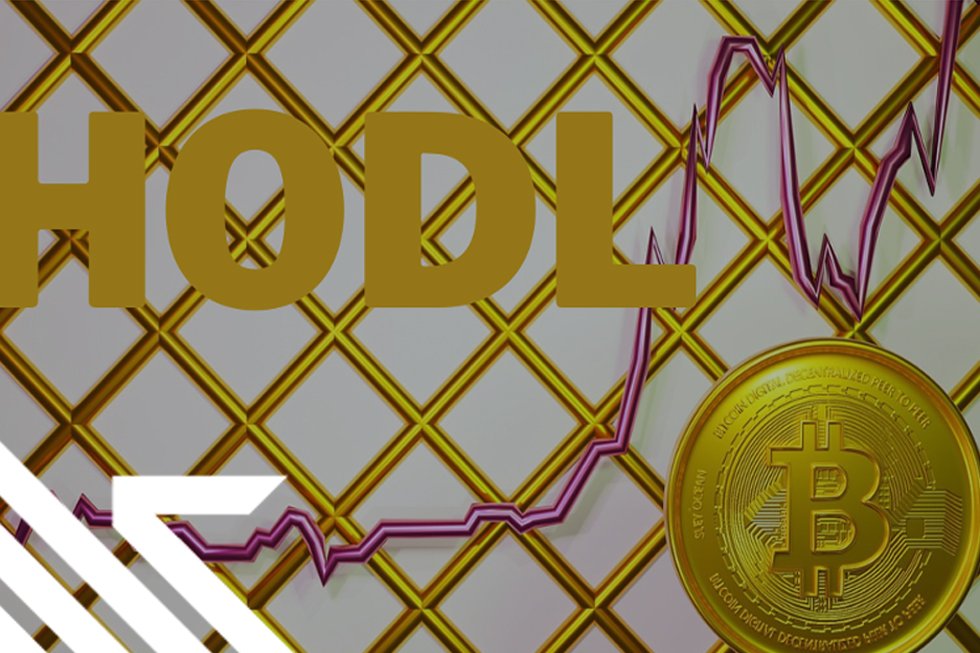On December 18, 2013, someone going by the username GameKyuubi on Bitcointalk, a popular online forum with early Bitcoin enthusiasts, published a post describing his way of growing value through the cryptocurrency. In particular, he explained why he had chosen to hold his bitcoins instead of trading for profits from the daily price highs and lows.
GameKyuubi described himself as a ‘bad trader.’ That he did not consider himself part of the group of the ‘good traders’ who successfully predicted short-term price highs and lows and made millions. He thought he was better off buying bitcoin and holding it long-term to gain from the potential growth in price.
The post was seemingly inconsequential except GameKyuubi had misspelled several words, including hold as HODL in its title. He subsequently explained the misspellings as mistakes caused by being a little inebriated after consuming some ‘whiskey.’
Nevertheless, the post attracted many comments, with most poking fun at the HODL misspelling. But slowly the misspelled word morphed into a word for a specific Bitcoin saving concept. And soon, it became an backronym for Hold On for Dear Life (HODL).
Besides not having to watch the market hourly, daily, weekly, or even monthly, HODLing allows those who use it not to be concerned with events that impact the price in the short term. They also do not need to be experts in continued fundamental and technical analysis. At the same time, they do not have to resort to outright speculation.
What exactly is HODL?
While seemingly simple, some users have utilized HODLing to great effect. Anybody who has held bitcoins for more than four years has potentially gained significantly.
For example, if you bought a bitcoin in July 2018, and you haven’t sold it yet in July 2022, it is worth three times the price you acquired it at. That is despite the market having lost close to 70% of its value in November 2021 when Bitcoin reached an all-time high price of about $70, 000.
Indeed, HODL involves buying crypto assets and holding on to them long enough for the price to rise significantly. There is no specific time frame recommended. However, ideally, you should be prepared to hold your assets for at least four years—to benefit from at least one Bitcoin reward halving cycle.
But why would you be so assured that eventually, the price of the crypto asset you acquired will go up and give you a meaningful return on investment?
Two primary factors contribute to crypto assets having the potential of their value growing over time.
The deflationary nature
Most established crypto assets are designed to be limited in supply. Bitcoin, in particular, the crypto asset with the highest market capitalization, has a 21 million cap. That means not more than 21 million bitcoins will ever be in supply.
After every ten minutes, some bitcoins are released into circulation. Every four years, the amount released after every ten minutes is slashed by half. At some point (around the year 2140), there are going to be no more coins released into circulation.
Some cryptocurrencies achieve deflation through other means. For example, Ethereum controls the amounts of coins in circulation by burning (destroying) some of them.
The dynamic of having a cap and an emission rate that declines over time means that the supply declines with time. In theory crypto should act like any other asset in a free market, the low supply of crypto pushes the price up, especially if the demand is maintained or increases.
Increased adoption over time
The forces of supply and demand determine the price of any assets or commodity in a free market. The deflationary nature of cryptocurrencies constrains their supply. Therefore, their prices are more likely to rise especially if the demand side is increased.
It is generally expected that awareness and approval of the power of blockchain technology and its applications will grow over time. This awareness may drive up the demand for cryptocurrencies.
For assets like Bitcoin, the adoption is driven by its monetary and instrumental value. For some other assets on the blockchain, the demand for them might be driven by the growing utility use in specific ecosystems.
For example, the utilization of ETH will likely go up as more applications and assets are launched on the Ethereum blockchain. Each of these applications and assets needs ETH to pay for gas fees.
With that stated, the prices of most crypto assets are positively correlated with that of Bitcoin. That means their prices mirror the price of Bitcoin. When the price of Bitcoin goes up, the rest follow, and vice versa.
That means, as long as a crypto asset has a sound technological foundation, its value will likely grow alongside that of Bitcoin over time.
How to be an efficient HODLer
Even though HODLing seems straightforward, you still need to be strategic for it to work for you. The following are the basic steps you need to take to make HODLing worthwhile:
1. Pick assets that can work with the strategy
The asset you pick must have a supply and emission rate that can easily be quantified. More importantly, it should have a deflationary supply. Indeed, not all crypto assets are designed, so their supply is limited, and their utility use automatically grows with time.
For example, stablecoins such as Tether, USD Coin, and DAI are unsuitable for HODLing. That is because their value is pegged on another asset, such as the US dollar. Also, their instrumental value is based on the continued support of a centralized organization or service provider.
2. Avoid pump and dump schemes
The crypto market is accessible to anyone who aspires to create and share value. While that is a good thing, it makes it easy for scammers to target investors. You need to watch out for assets created and released to the public as part of scamming schemes.
To be safe, especially if you are not highly knowledgeable about crypto, pick the most established assets for HODLing, such as Bitcoin, ETH, Cardano, and Solana.
3. Invest an amount that you will not need for a long time
HODLing is a long-term saving strategy. Before putting your money in it, you should be comfortable having it tied for a lengthy period.
In the least, you should look at not getting it out for at least four years. That will allow you to benefit from Bitcoin’s reward halving cycle.
4. Buy during major price dips
If you intend to hold crypto assets for up to four years, it might not matter at what price you buy. However, to increase your chances of gaining value earlier, buying during major price dips is advisable.
Indeed, the HODling strategy includes increasing your stash of coins whenever there is a major drop in market prices. While novices view price drops as a negative occurrence in the market, HODLers see it as an opportunity.
5. Put your funds in secure non-custodial wallets
A true HODLer does not trust anyone to keep their crypto assets for them. They secure and maintain full control at all times and therefore don’t have to worry that sometimes at some point, the person they trust will make mistakes, disappear with their assets or be a hacking target.
You need to find secure and reliable non-custodial wallets (meaning you possess the private keys) to keep your stash of coins. It should be cold storage, which means it is not exposed to the internet so hackers can access it remotely.
With that stated, it is important to always understand that you are your own bank, and therefore the entire security is your responsibility. If you lose your funds, no one is going to refund you.
In particular, you should not only secure the private keys to your wallet from theft but from you losing them. That means you should have the private keys in your full control and also create mechanisms for recovering them in the event you lose them, such as generating a seed word or mnemonics.
Otherwise, buy and wait. Even during the bearish periods, buy and Hold On for Dear Life(HODL).




